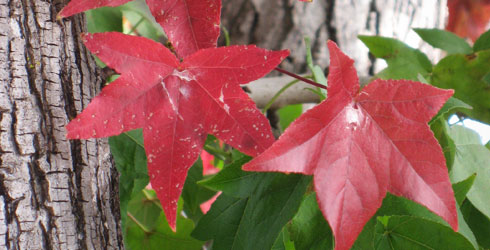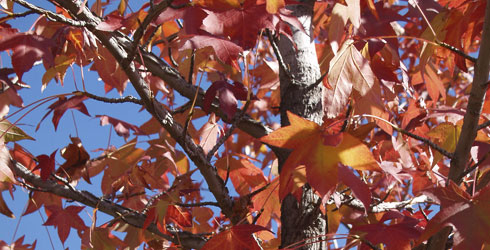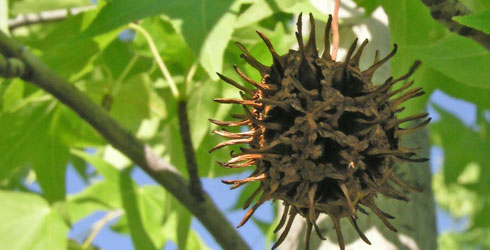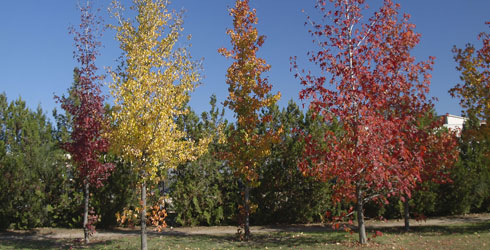Liquidambar styraciflua (sweetgum)
Liquidambar styraciflua is an attractive and widespread tree which is commonly grown as an ornamental street tree in the UK because of its tolerance of urban situations and striking autumn colour.
It was first described by Linnaeus in the mid 18th century from a specimen sent to him by Pehr Kalm, one of his former students. The species was reportedly introduced to the UK in the late 17th century.
It was almost certainly amongst the collections made by the famous early botanist and explorer Mark Catesby, in the south-eastern United States in the early 18th century, and in cultivation in Europe by the time it was described by Linnaeus.
The tree is named for the reddish resin that exudes from the bark known as storax .
Species detail

© Luis Fernßndez Garcφa
Uses
The resin storax has been put to a wide variety as an ingredient in:
- adhesives
- soap
- perfume
It is also used:
- as a gum
- for medicinal purposes, for example in Friar's Balsam - used to treat colds and skin problems
The wood can be used for furniture making and as a veneer.
-

Taxonomy
Liquidambar styraciflua was formerly placed in the witch-hazel family, Hamamelidaceae this has now changed find out more.
-

Distribution
Liquidambar styraciflua is a fast-growing tree most commonly found in North and Central America. Find out exactly where it likes to live.
-

Biology
Liquidambar styraciflua trees are sometimes confused with maple or plane trees. Discover more about this tree’s distinguishing features, and how you can tell it apart.
Images

Liquidambar, typical autumn foliage.
© Stephen Lea, Creative Commons Attribution-Share Alike 3.0 Unported
Liquidambar, typical autumn foliage.
© Luis Fernández García, Creative Commons Attribution-Share Alike 2.5 Spain
One year old Liquidambar fruit.
© Luis Fernández García, Creative Commons Attribution-Share Alike 2.1 Spain
Stand of young Liquidambar trees showing typical autumn colour.
© Luis Fernández García, Creative Commons Attribution-Share Alike 2.5 Spain
Detailed botanical illustration of Liquidambar.
Author
Steve Cafferty
Collections Project Manager
Department of Botany
A word from the author
"Its beautiful autumn colour, rapid growth and medium size make this a very popular ornamental tree within the UK. Few people probably know however, of the many medicinal and other benefits associated with the resin exuded from the bark, or the interesting ecology of the species whereby it is able to inhabit both temperate and tropical regions by establishing itself at cooler, higher elevations at lower latitudes."
